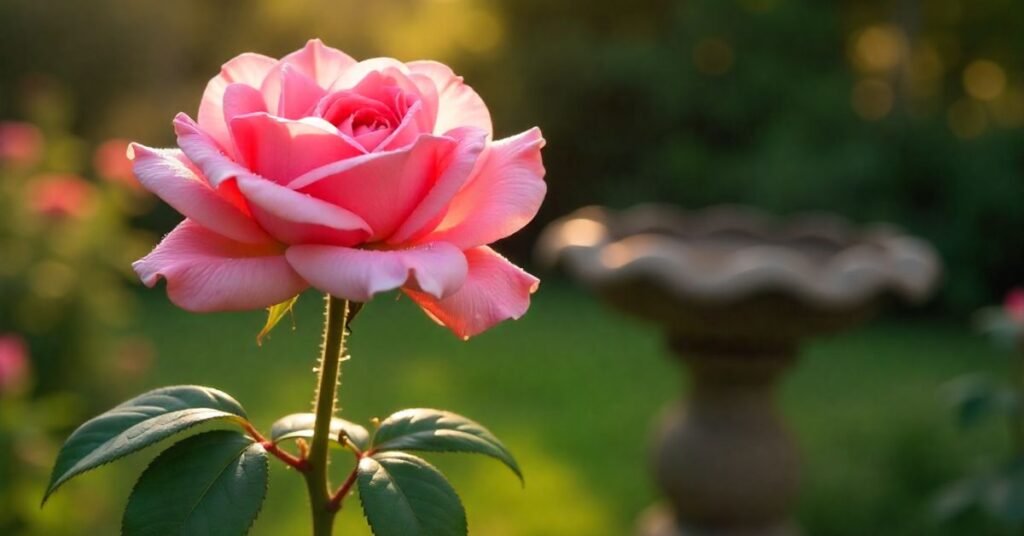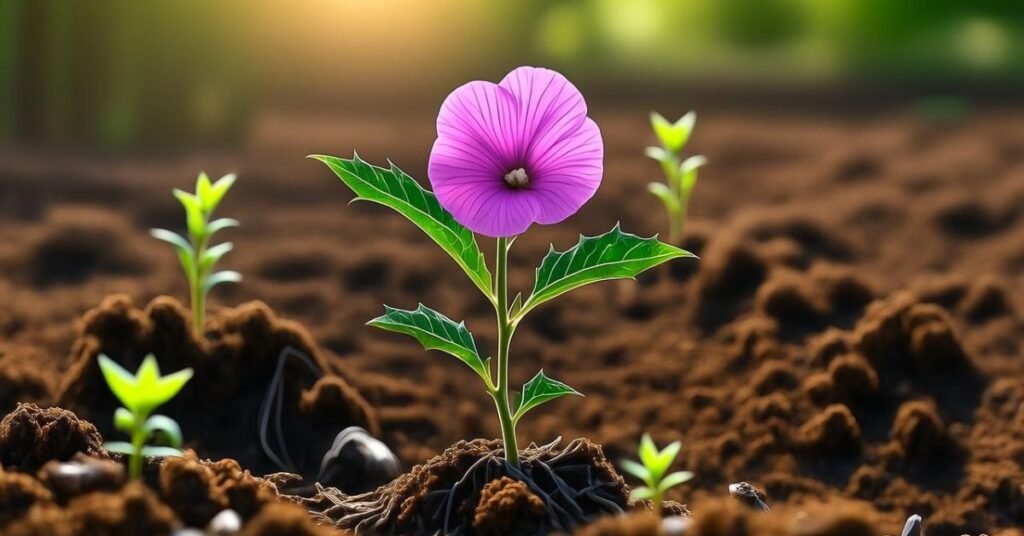Introduction
The pink rose plant is a symbol of grace and love. It is admired for its soft petals and gentle fragrance. Many gardeners grow it to add charm and beauty to their space. Pink roses come in different shades, from pale blush to deep pink. Each shade carries a special meaning and makes the plant unique.
Pink roses attract attention with their elegance. They are perfect for brightening gardens and homes. People also use them in gifts, decorations, and events. Their timeless beauty creates a sense of joy and peace. Once you see a pink rose in bloom, it is hard to forget its charm.
The pink rose plant needs care and sunlight. It grows well in healthy soil with regular watering. Gardeners love it for its simple yet striking look. This plant not only decorates spaces but also spreads feelings of happiness and love.
Symbol of Grace and Elegance
The pink rose plant shows natural charm. Its soft color reflects kindness and love. It carries a gentle beauty that touches hearts. People use it to express respect and admiration.

This plant adds elegance to every place. Its blooms spread calmness and peace. The pink rose stands as a sign of dignity. It reminds us of care, warmth, and grace.
Sunlight
The pink rose plant loves sunlight. It grows best when it gets at least six hours of direct light every day. Sunlight helps the plant produce healthy leaves and bright blooms. Without enough light, the flowers may look dull and weak. A sunny spot in the garden or balcony is ideal for keeping your pink rose plant happy and thriving.
Water
The pink rose plant needs regular watering to stay healthy. It likes moist soil but not too much water. Overwatering can harm the roots and cause disease. Always check the soil before adding water. If the top layer feels dry, it is the right time to water. Deep watering once or twice a week is better than light watering every day. This keeps the roots strong and the plant full of blooms.
Temperature
The pink rose plant grows well in mild temperatures. It prefers a range between 15°C to 26°C. Extreme heat can dry the leaves and flowers. Very cold weather can damage the plant and slow its growth. A balanced climate helps the pink rose plant bloom beautifully. Protecting it from harsh conditions will keep it healthy and long-lasting.
Varieties
Hybrid Tea Roses

Hybrid Tea Roses are known for their large, elegant blooms. They usually grow one flower per stem, making them perfect for bouquets. Their classic shape and strong fragrance make them a favorite among rose lovers.
Floribunda Roses
Floribunda Roses produce clusters of flowers on each stem. They bloom more often than other types, giving gardens a colorful display. These roses are hardy and easy to care for, making them popular with beginners.
Climbing Roses
Climbing Roses grow tall and spread along fences, walls, or trellises. They create a stunning view with their abundant blooms. With proper support, they can transform any garden space into a floral arch or wall of beauty.
Miniature Roses
Miniature Roses are small in size but full of charm. They are perfect for pots, containers, or small gardens. Despite their size, they bloom beautifully and can brighten up indoor and outdoor spaces.
Grandiflora Roses
Grandiflora Roses are a mix of hybrid tea and floribunda roses. They produce large blooms like hybrid teas but in clusters like floribundas. These roses stand tall and elegant, adding grandeur to any garden.
Symbolism and Cultural Meaning
The pink rose plant carries deep symbolism and cultural meaning. It is often linked to love, grace, and admiration. Light pink roses show sweetness and innocence, while darker shades express gratitude and appreciation. In many cultures, pink roses are used in celebrations, weddings, and gifts to share feelings of joy and affection. They are seen as a timeless flower that speaks the language of kindness and beauty without words.
Benefits for Home and Garden
The pink rose plant is more than just a flower; it adds value to both home and garden. Its beauty creates a calming and cheerful atmosphere. The fragrance brings freshness, while the blooms enhance the look of any space. Caring for roses also gives joy to gardeners and connects them with nature.
- Adds beauty and elegance to gardens and homes
- Spreads a pleasant fragrance in the surroundings
- Attracts pollinators like bees and butterflies
- Can be used for decoration and gifting
- Brings peace and joy to the gardener’s mind
Pink Rose Plant Problems & Solutions
The pink rose plant, like any other, can face a few problems while growing. Issues such as pests, diseases, and poor growth are common. These problems can affect the health of the plant and reduce its blooms. However, with proper care and quick action, most of these challenges can be solved easily.

Gardeners can protect their pink rose plants by keeping the soil healthy, watering correctly, and checking the leaves often. Using natural sprays, pruning, and providing enough sunlight are also helpful. Below is a simple table showing common problems and their solutions.
| Problem | Solution |
| Aphids on leaves | Spray with soapy water or neem oil |
| Black spots on leaves | Remove affected leaves and use fungicide |
| Powdery mildew | Improve air circulation and spray with baking soda solution |
| Yellowing leaves | Check soil drainage and avoid overwatering |
| Weak or no blooms | Add fertilizer and ensure proper sunlight |
Conclusion
The pink rose plant is a true symbol of beauty and grace. With proper care, it grows healthy and blooms with charm. From its cultural meaning to its benefits for home and garden, this plant brings joy in many ways. Though it may face some problems, simple solutions can keep it thriving. Growing a pink rose plant is not just gardening, it is an experience of love, patience, and nature’s elegance.
FAQs about Pink Rose Plant
1. How much sunlight does a pink rose plant need?
It needs at least 6 hours of direct sunlight daily to grow well and bloom beautifully.
2. How often should I water my pink rose plant?
Water deeply once or twice a week, depending on the weather and soil condition.
3. Can I grow a pink rose plant in pots?
Yes, pink roses grow well in pots if the container is large enough and has good drainage.
4. What fertilizer is best for pink roses?
A balanced rose fertilizer or organic compost works best to support healthy growth.
5. How do I protect my pink rose plant from pests?
Regularly check leaves and use natural sprays like neem oil to keep pests away.


